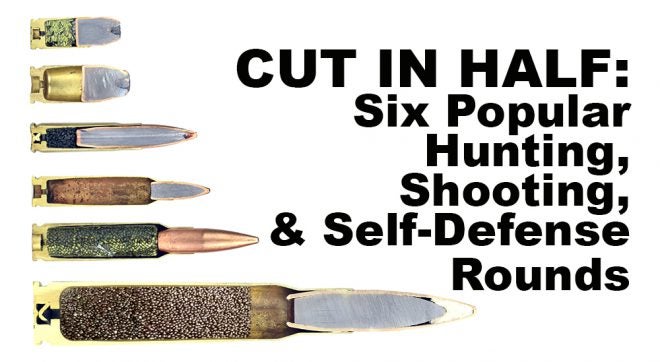I love these cutaway pictures, one of my favorites is that picture we posted back in 2014 from the UK of that Webley Mark IV .38/200 revolver with the barrel obstruction that was cut in half. Well when I stumbled upon this awesome new post from Fog Ammunition with high quality pictures of ammo cut in half I had to share it. Their recent post shows six popular hunting, shooting and self defense rounds cut in half. Check them all out below.

.223 rem on the LEFT, 5.56 Nato on the RIGHT.
Bullet weight: 45 to 77 grains. Bullet style: Various Velocity: 2750 – 3750 fps Year Designed: 1964 This popular round was the first to be bifurcated, showing the base internal components of the popular cartridge. The process was as simple as using a hacksaw to bisect and a belt sander to polish. To the naked eye the differences are nearly indistinguishable aside from annealing of the .223, some people also say they can see the crimp in the primer pocket of the 5.56.
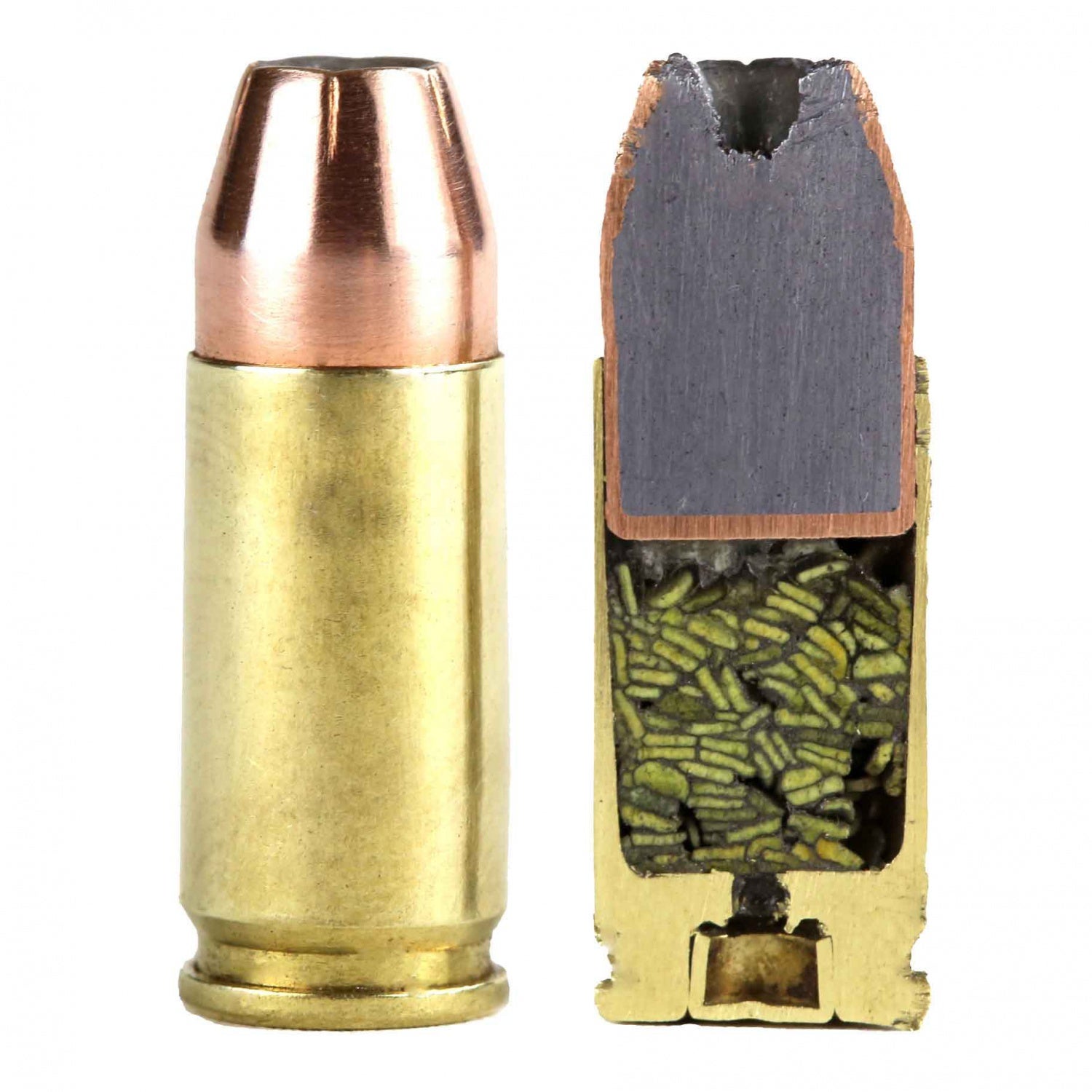
9mm Luger
Bullet : 9mm Luger 125 grain Sierra Jacketed Hollow Point Velocity: 1090 fps Year Designed: 1901 This bisection is a 9mm Jacketed Hollow Point round with flake powder held together with super glue. After this self-defense round was cut by a trained professional the round was polished by hand. Some think that the powder looks like worms or sticks, but it is in fact the flake stacking up on itself to give you an inside view! Designed by Georg Luger, the round is heavily used today by civilians, military, competitive shooters, and law enforcement.
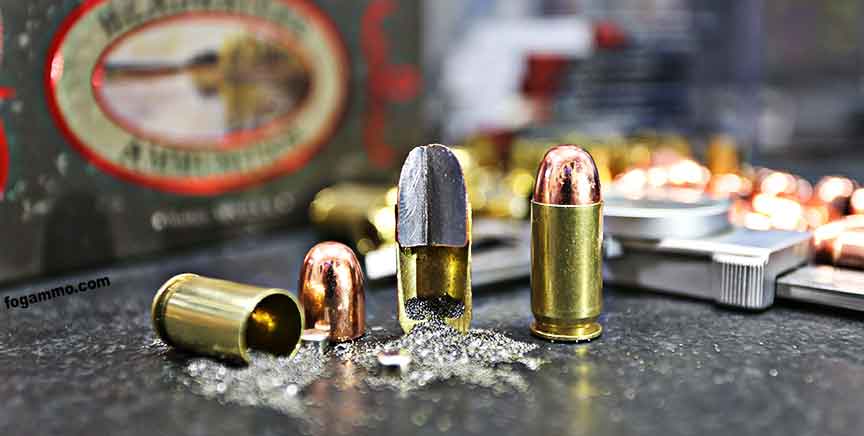
45 ACP
Bullet: 45 ACP 230 Grain Berries MFG. Round Nose Velocity: 850 fps Year Designed: 1904 One of the most popular calibers of its time, the round was first developed in for use in John M. Browning’s 1911 Automatic Colt Pistol, and is still used today by shooters and military alike. Taking on the artistic eye of a still life photographer, this picture captures three different stages of the popular 45 ACP round. The powder your see spilling from the pie cut round is to represent the specifications as if the rounds were loaded properly and not cut in half.
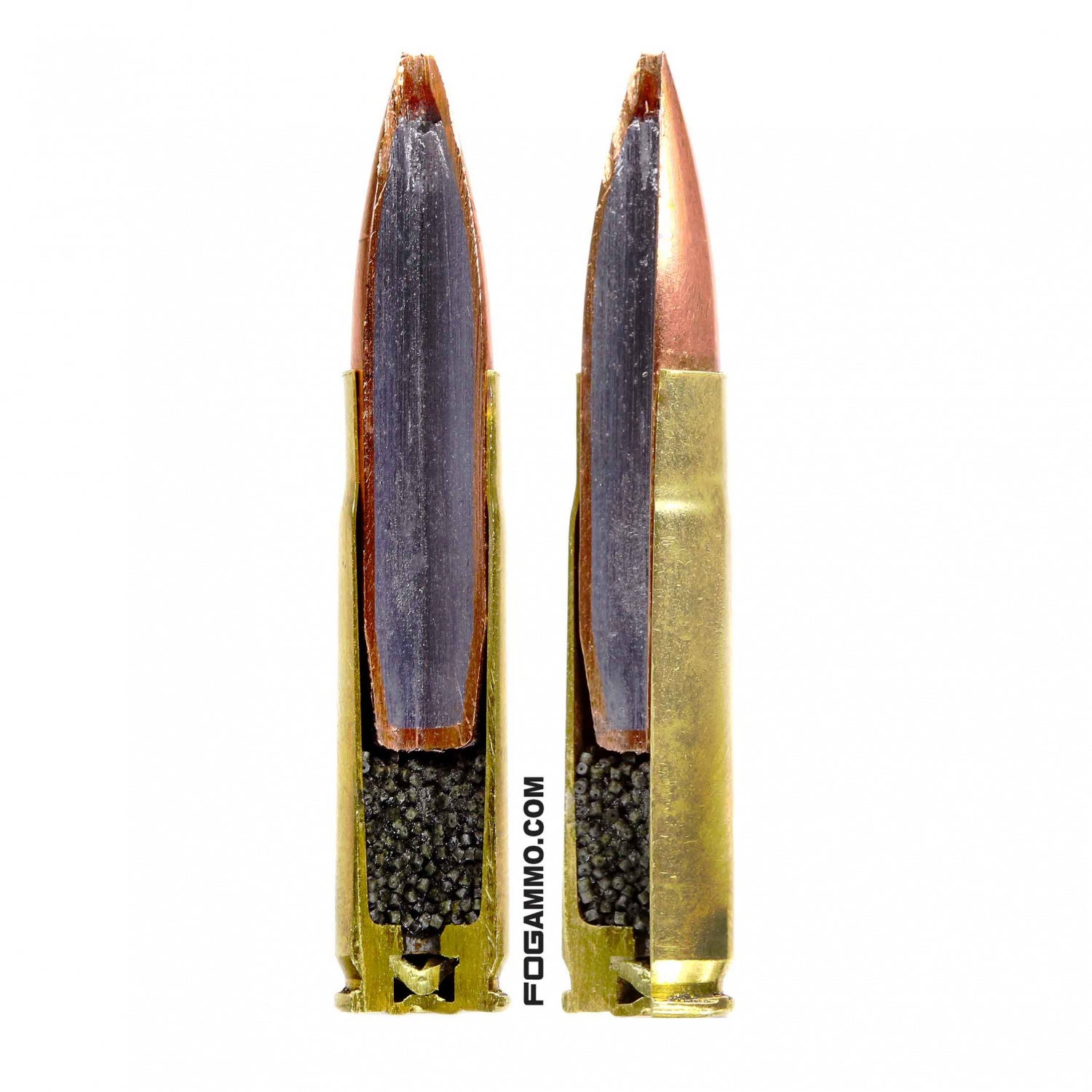
300 AAC Blackout
Bullet weight: 300 AAC Blackout 220 Grain Sierra Hollow Point Boat Tail Bullet style: Hollow Point Boat tail Velocity: 1050 fps Year Designed: Early 1990’s First designed for special operations groups needing more stopping power, for this model of the 300 BLK a Dremel tool was used to create a pie cut within the bullet and brass case. A measured amount of power was formed inside the case with super glue, which displays roughly 65% of spec charge. Ever popular with the use of a suppressor, the low amount of powder is due to the rounds subsonic capabilities of traveling below the speed of sound at 1126 feet per second.
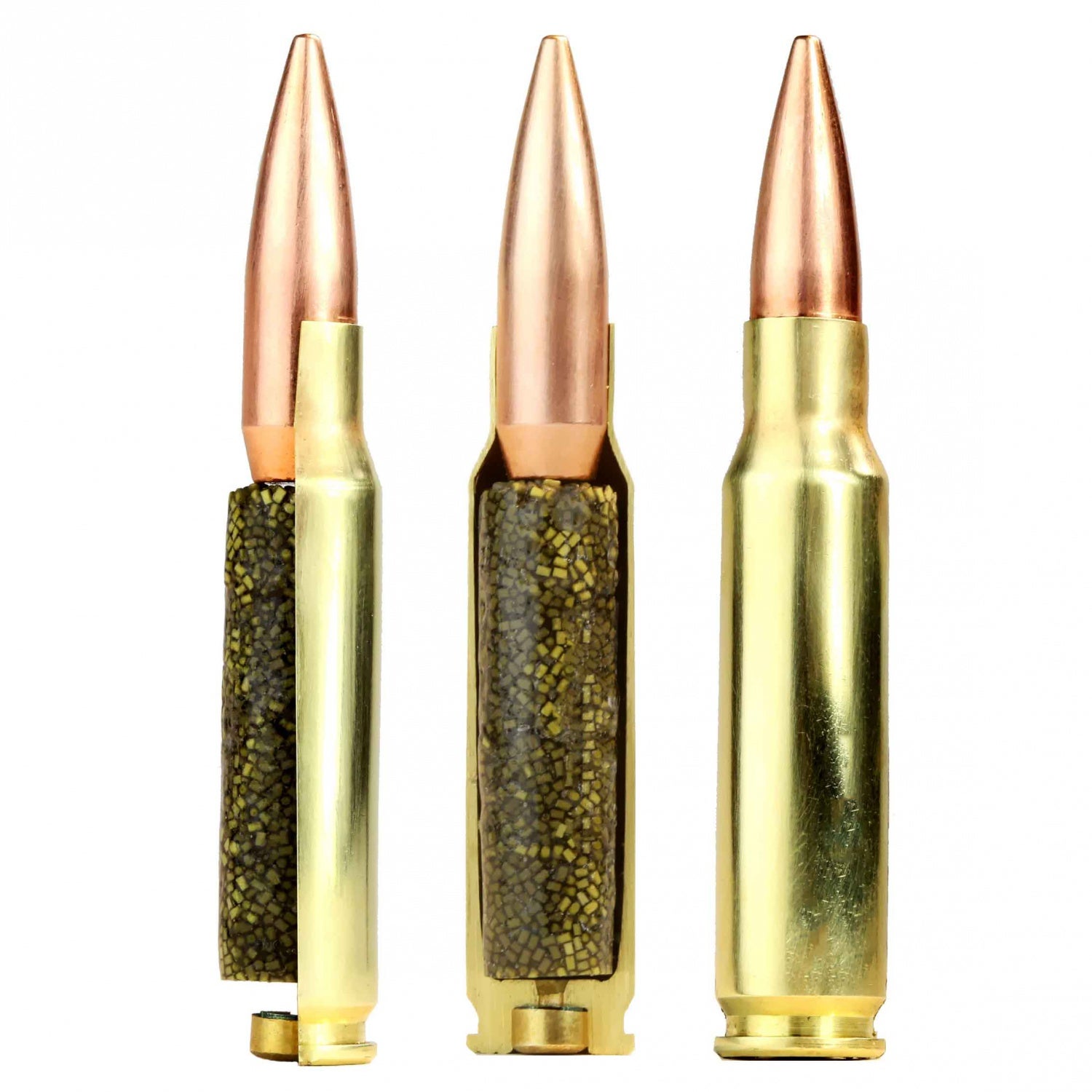
.308 winchester rounds
Bullet: 308 Win 168 grain Sierra Hollow Point Boat Tail Velocity: 2800 fps Year Designed: 1952 This model took on a different approach by only cutting the brass case and displaying the full bullet, primer and powder load. A spec amount of powder was used to create the model powder form. An estimated 10% volume was added during the forming process, along with an undetermined amount of air pockets.
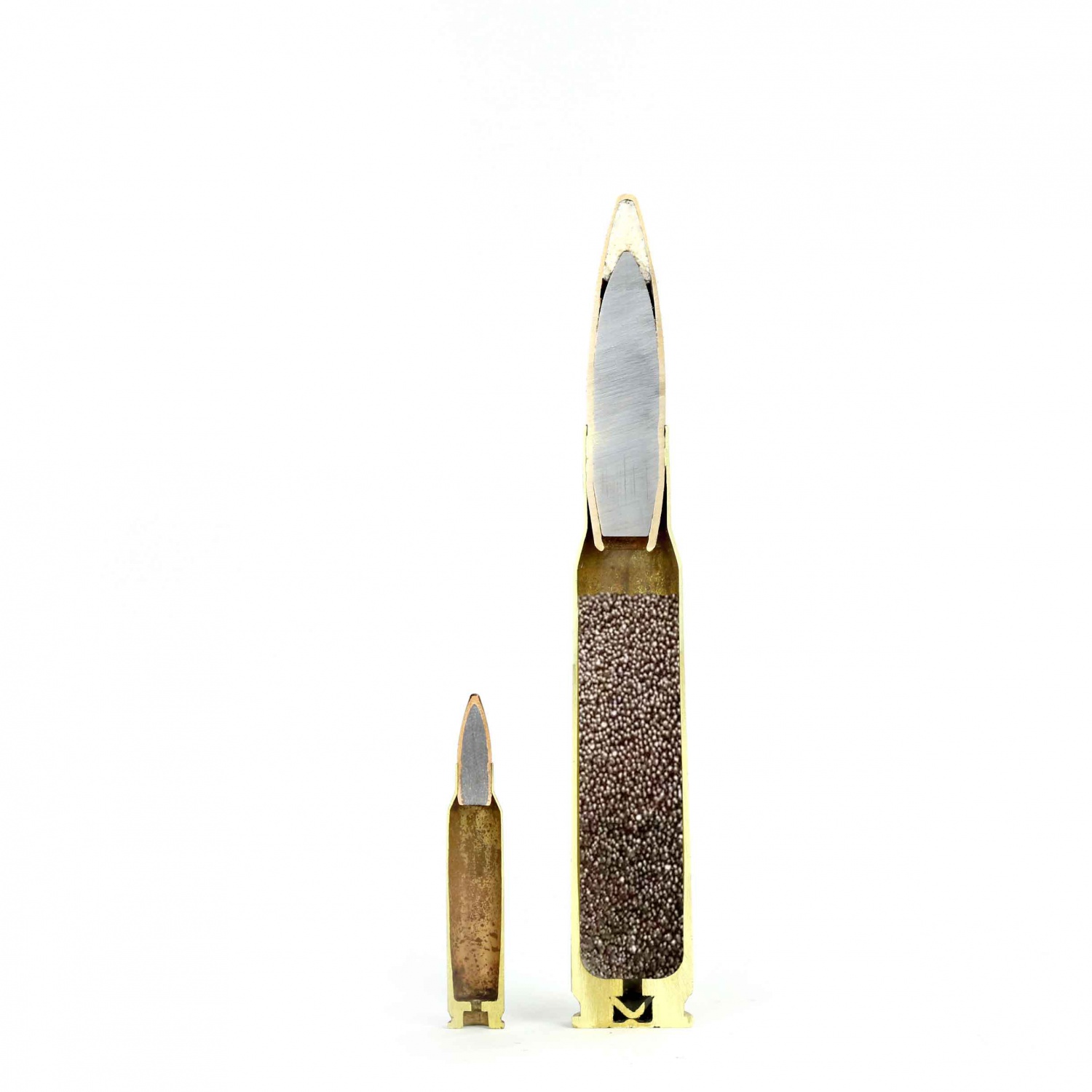
50 BMG
In comparison: .223 Rem 55 Hornady Grain FMJ on the LEFT, 50 BMG on the right. Bullet weight: 750 Grains Bullet style: FMJ Velocity: 2800 fps Year Introduced: Late 1910’s Last but most definably not least is the 50 Caliber BMG round. Infamous for it’s use in the M2 Machine gun and capable of reaching a maximum ballistic range of 7,000 meters. The round has proven its dominance in nearly every major conflict in the world for over one century. A typical round uses over 225 grains of powder. That’s almost 10 times the amount in a 5.56 NATO Round!
 Your Privacy Choices
Your Privacy Choices
